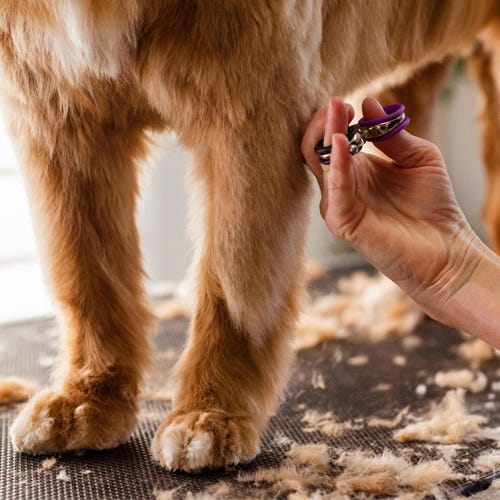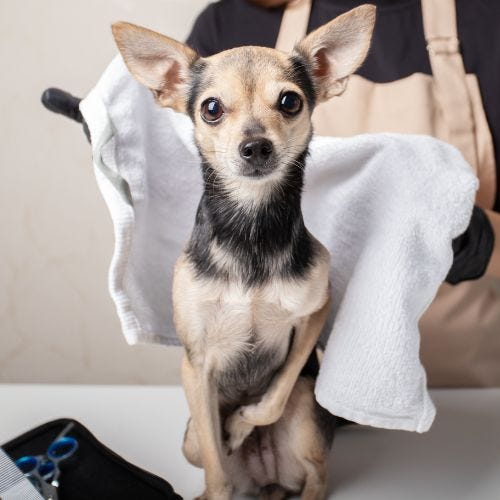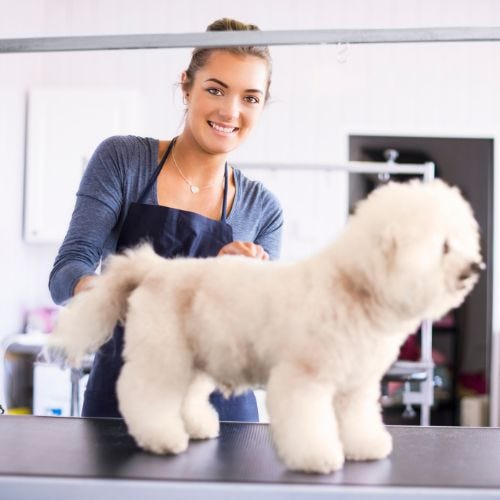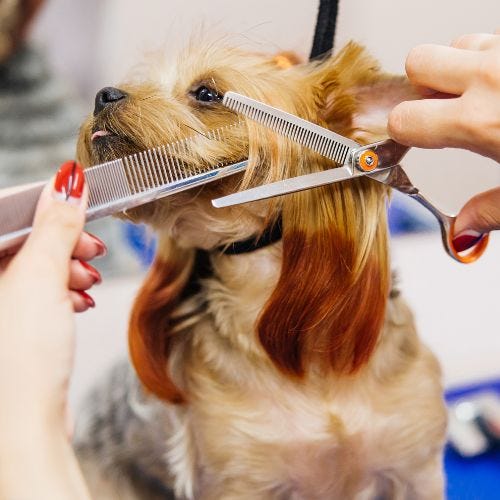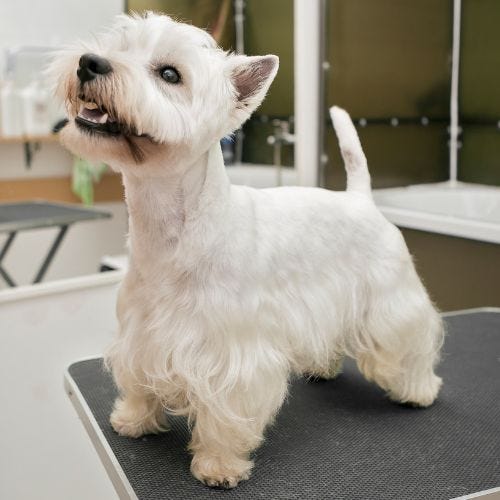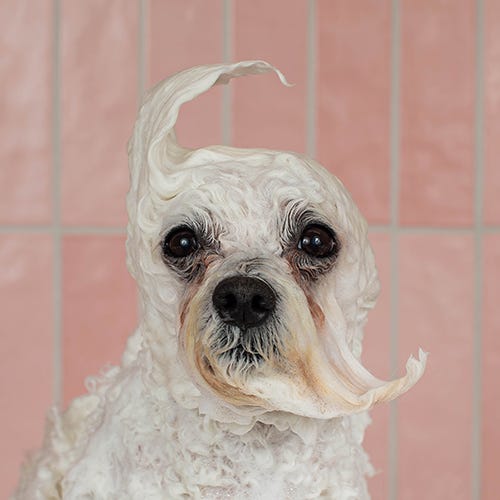A groomer friend introduced me to this concept many years ago, saving me time, effort, and grief. The basic premise is this: when you are grooming a pet dog, take a moment to consider what it will be like to groom that dog on its next visit.
Here is an example. Chanel is a sweet, standard poodle who visits us every seven weeks. Her coat is not great; it's on the soft side and tends to be limp. She looks terrific right after a bath and fluff dry, but I have learned from experience that it doesn't last. Her regular grooming is a #1 snap-on comb on her body and legs, smooth feet and face, a scissored topknot, and a nice pom on her tail. Every time I finish fluff drying her, I think, "She'd look so nice if I left her legs longer and scissored them." And she would! But I remind myself about grooming for the next groom, and I think about how her legs will not look so great a day or two after the groom because her coat lacks the texture to keep them fluffy. I also remind myself that her owners don't brush her regularly, and if I leave those legs longer, there is a good chance they will be tangled when she returns.
Grooming for the next groom can also involve things like clipping the area under a dog's "armpits" shorter because you know the fur there tangles due to the harness the dog wears for walks. It can be using the shortest blade you can manage under a dog's eye corners because they always have a build-up of discharge there when they come in. Or using thinning shears to remove lots of fur behind a Golden Retriever's ears because you know it will have golf-ball-sized mats when it returns.
By paying attention to the pet's coat type and knowing how much maintenance their coat receives at home, you can tweak the grooming you do today to help ensure that the dog not only looks nice when you finish today's grooming but also has a fighting chance of returning in decent shape if it is on a regular schedule.
It may be as simple as clipping the entire dog a bit shorter or concentrating on areas you know from experience are a problem on that particular pet, but grooming for the next groom is a wonderful concept that makes grooming more effortless for you and the dog.


